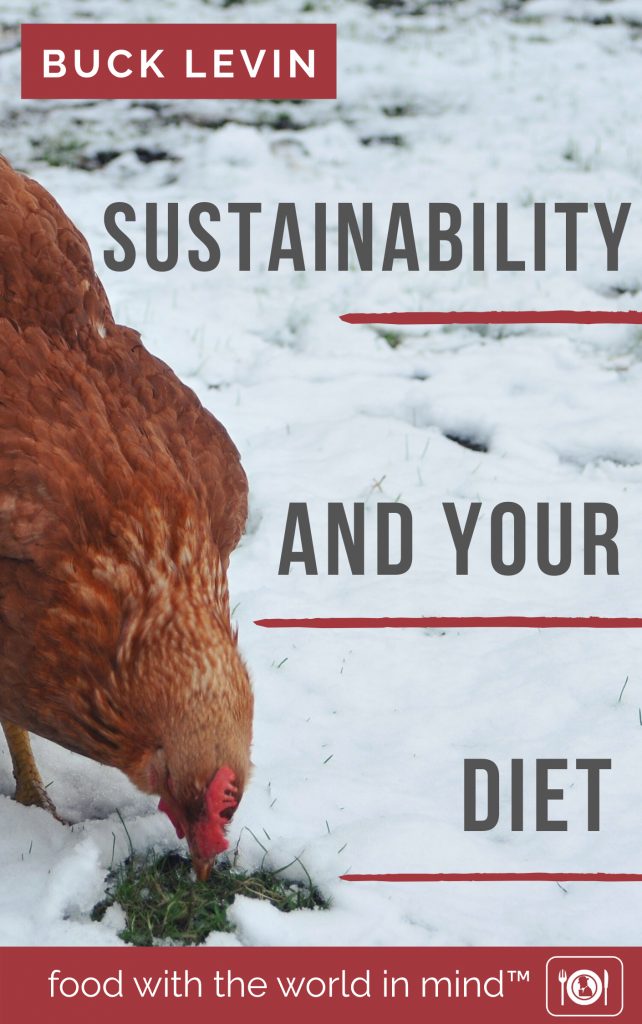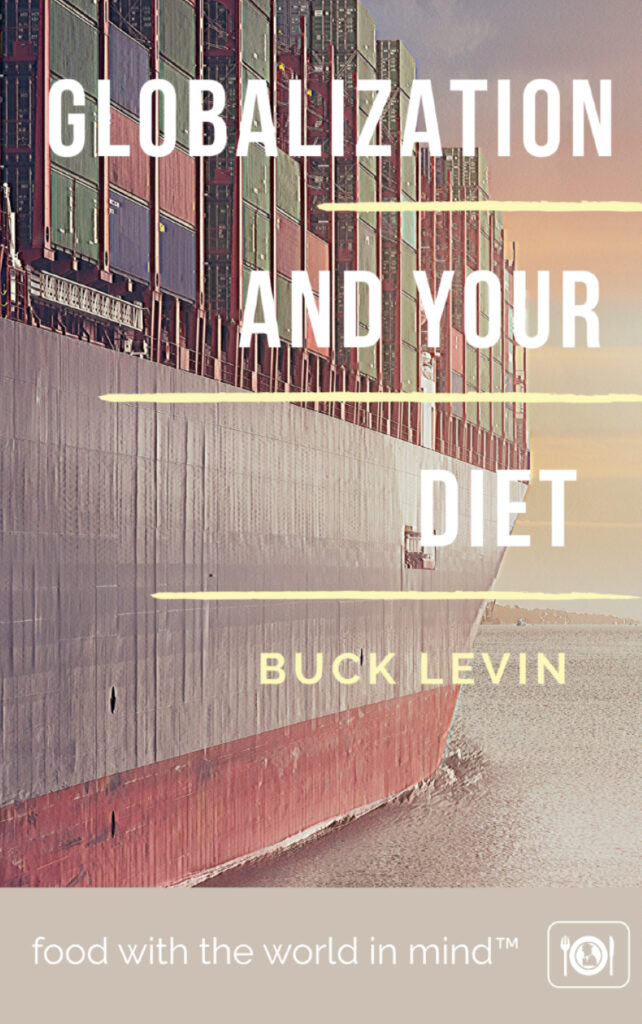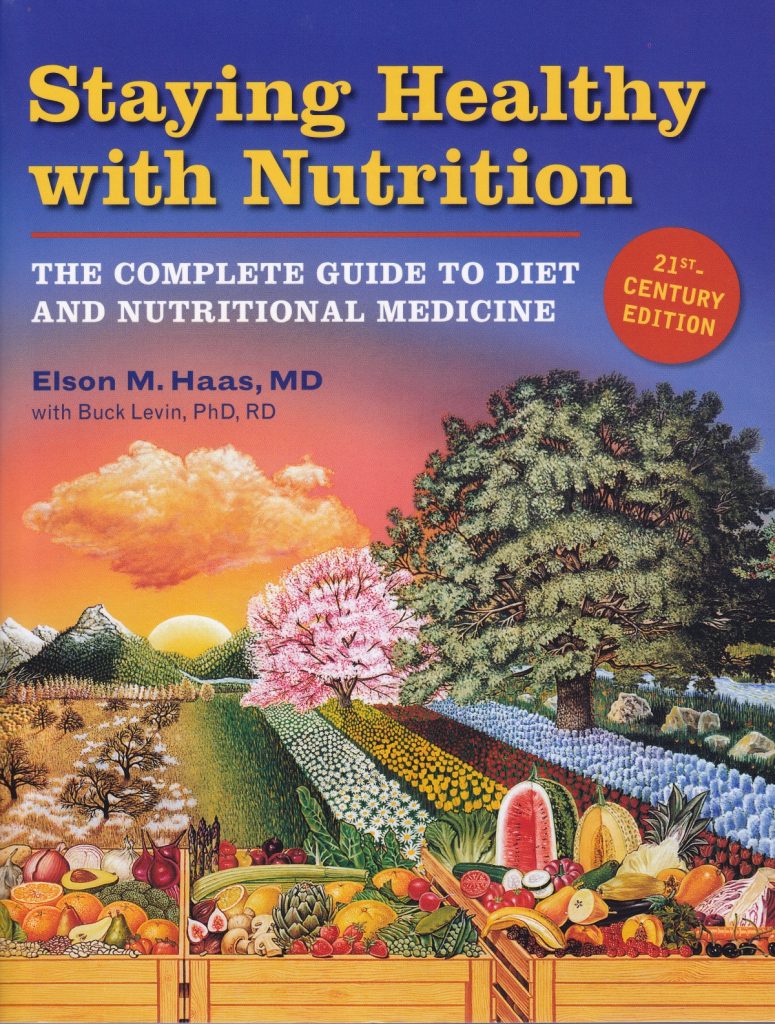
Coming in Spring 2025:

After two decades of teaching about nutrition and ecology, I decided to develop a series of publications called Food With The World In Mind.™ Sustainability and Your Diet is the first volume in the series. This 325-page book blends research from nutrition, ecology, and economics together with the everyday experience of eating. It also provides a collection of live links to several hundred science-based websites. The book’s four chapters cover a wide range of topics including: sustainable agriculture, foraged foods, large-scale farming, precision agriculture, seafood quality, life cycle assessment, food supply chains, food contaminants, food packaging, genetically engineered foods, irradiated foods, and regulation of the food supply.
Coming in Spring 2026:

This second volume in the series provides a backstage tour of the global food supply. Its opening chapter sorts through definitions of globalization to make sense of the phrase “global food supply”. The following chapter introduces the “cast of characters” responsible for global food production: governments, corporations, citizens, and elite/power organizations (like the World Trade Association, Trilateral Commission, G7 and G20). The remaining chapters take a “behind the scenes” case-study approach to globalized food. Topics addressed include: scale of production, GDP, food commodities, distribution channels, containerization, transportation hubs, large-scale farming, farming contracts, small farms, regional eating, and food sovereignty.
Environmental Nutrition:
Understanding the Link between Environment, Food Quality, and Disease

Drawing on 842 journal studies from the fields of cell biology, toxicology, immunology, neurology and genetics, Environmental Nutrition offers a molecular-level understanding of the link between environment, food quality, and disease. A core section of the text provides a comprehensive survey of toxic substances in the U.S. food supply, followed by a step-by-step analysis of their biochemical impact on body function. The challenges posed by food toxicity at the level of public policy, food supply dynamics, biogeochemical cycles, and medical philosophy are carefully reviewed in a concluding section. [VIEW TABLE OF CONTENTS]

Included in the book are in-depth explorations of controversial topics like food irradiation and pesticide use; evaluations of over 100 toxic substances commonly found in food; and a detailed cellular-level analysis of potential health problems. Strategies for the establishment of environmental standards in nutrition are outlined, including sustainable agriculture and organic food production. (304 pages, 112 tables and figures, 842 indexed journal references.)
NOTE: In order to make Environmental Nutrition available in a high-quality, searchable PDF format, I ended up with a large file size (94MB). Purchasers have the option to download the book as a single PDF file or as 8 smaller files (corresponding to the front matter, back matter, and 6 individual chapters). These smaller PDF files range from 3MB to 20MB each.

Staying Healthy with Nutrition – 21st Century Edition

Available directly from Amazon.com in Kindle, hardcover, and paperback format, Staying Healthy with Nutrition is the 2006 revision of Dr. Elson Haas’ classic reference guide. I reworked each of the food, nutrition and diet chapters while integrating information from approximately 1,500 research studies. I also created a 58-page bibliography of journal citations for this edition.
Buck Levin Doctoral Dissertation

My 196-page dissertation (which includes over 250 research citations in its last 23 pages) is primarily useful not for its statistical methodology or statistical findings but for its literature review on the concept of aging. The work of Harvard paleontologist Stephen J. Gould on heterochrony; of University of Arizona anthropologist William Stini on the maladaptiveness of accelerated maturation; and of physiologist Edward Masoro at the University of Texas on caloric restriction and “undernutrition with malnutrition” are highlights of this research review. Also covered in detail are the concepts of entropy and neoteny, as well as diverse theories regarding infant feeding, dietary intake during childhood, and age of menarche. Despite being dated, this literature review should prove worthwhile reading for persons interested in aging as a concept or in multi-disciplinary approaches to aging.
Available for free, but most be ordered through my Shop.
